News
Beijing’s Massive Aviation Museum Has More Fighters Than Most Countries: Military Watch Visits to See China’s Aviation History
The Chinese People’s Liberation Army (PLA) Chinese Air Force has over the past 35 years modernised at a rate with few if any rivals in the world, coming from a force that in 1988 relied overwhelmingly on and still continued to receive 1950s fighter designs, to today being on the cusp of fielding the world’s first sixth generation fighters which the country is in a neck to neck race with the United States to develop. China in 2017 became one of just two countries in the world to field indigenous fifth generation fighters – a position it partially holds today as only the PLAAF and the U.S. Military field such fighters at squadron level strength – and is well positioned today to become the first county ever to serially produce two fifth generation fighter classes simultaneously. This contrasts starkly to China’s position in the 1980s when the country relied on the second generation J-6 fighter, a derivative of the MiG-19 which first flew during the Korean War in 1952, to form the large majority of its air units with no genuine third generation fighters in service. This placed it approximately three decades behind the industry leaders the U.S. and USSR. While the J-6s began to be phased out of service in the early 1990s, and would see the final units retired in the late 2010s from their final roles as trainers, their legacy as the PLA’s primary fighter for more than two decades can be seen at the China Aviation Museum in Beijing.

Members of the Military Watch team recently visited the China Aviation Museum and were able to observe and photograph some of the hundreds of military aircraft displayed there. What was particularly notable and unusual about the museum was its mass displays of fighters from the same class, albeit at times in different variants, in very long lineups that looked more like a lineup at an airbase. The fighters were often displayed in the same colours and came from the same units – contrasting to most museums which display not more than one or two aircraft from each class. Mass deployment of common classes means that the museum has more fighters than the air forces of most small and medium sized countries. Reflecting the previous composition of China’s fighter fleet, J-6s feature very heavily in the museum’s fleet with several dozen on display alongside dozens of the newer J-7 – a derivative of the Soviet MiG-21 which was produced in limited numbers during the Cold War, and largely for export, but was built on a much larger scale from the 1990s as a new generation of enhanced variants such as the J-7E began to replace J-6 units quickly and integrated third and fourth generation technologies. The 1990s was a transformative decade for Chinese combat aviation, as this field gained very considerable attention from the political leadership due to the central role of air power demonstrated during the Gulf War in 1991. This attention to aviation coincided with the availability of a range of new technologies from Soviet successor states after the superpower’s disintegration which gradually brought Chinese combat aviation up to a fourth generation level.
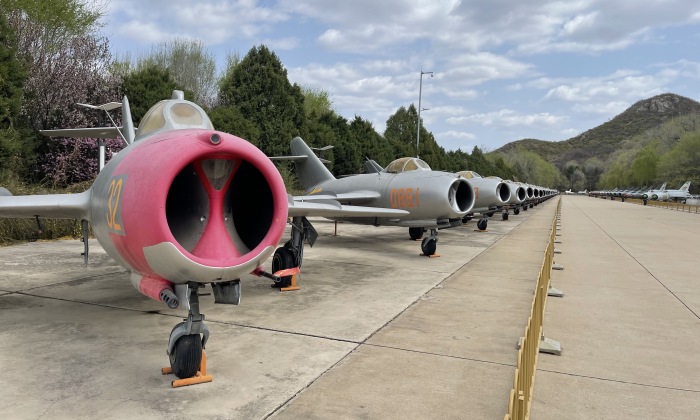
The J-6 notably saw a much larger production run in China than the original MiG-19 did in the Soviet Union, with reliability issues affecting the original largely resolved by Chinese designers while new features, including compatibility with a wider range of missile classes, were gradually added to newer iterations of the aircraft. A twin seat trainer variant the JJ-6, and a dedicated ground attack derivative the Q-5, were also developed where no equivalent aircraft existed in the Soviet Union. The Q-5 also formed a very large portion of the displays at the China Aviation Museum with multiple squadrons’ worth on display. Where production of the J-6 was set up with signifiant Soviet support, its successor J-7 was developed as a result of reverse engineering efforts primarily using MiG-21 blueprints and parts obtained from the USSR. After supplying China with its first jet fighters the MiG-9 and MIG-15 in 1949-1950 the Soviet Union played a central role in transferring technologies and knowhow to facilitate the emergence of an aviation industry in the country, which began with basic assembly of Soviet built airframes but by the end of the 1950s had reached a stage where fighters could be produced fully indigenously. This was part of a massive transfer of technologies to industrialise China’s economy across multiple sectors that decade before the new Nikita Khrushchev administration in Moscow oversaw a serious deterioration in relations.
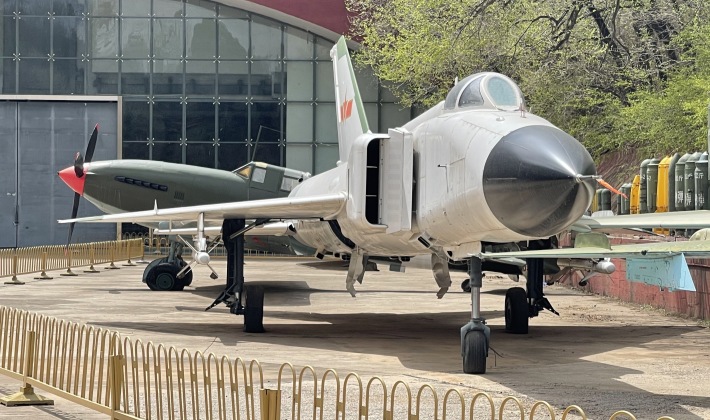
The China Aviation Museum hosts a range of other combat jets beyond the centrepiece J-6s, Q-5s and J-7s, including some J-8 interceptors and a single J-8 II interceptor. The J-8 was developed under a troubled program during the Cold War as a heavier twin engine counterpart to the J-7, but despite its simplicity saw little progress made until the 1990s when the enhanced J-8 II variant entered service with a heavily revised design, a much larger radar and fourth generation level avionics and weaponry. Also on display indoors is a model J-10 – China’s first fully indigenous fourth generation fighter – which entered service in 2004. While far from outstanding when it was first deployed, the enhanced J-10C variant which joined the fleet from 2018 is a close contender for the title of the world’s most capable single engine fighter today – and is in production on a larger scale than any other fighter in the world except for the American F-35. The J-10 represented a major landmark in Chinese combat aviation, although it will likely be some years before serial production J-10s will be put on display. Speculation that the early J-10A variant could be retired from service in the next decade was largely quashed by recent moves by the Air Force to integrate new engines and sensors onto the aircraft, which brings some aspects of their performance to a comparable level with the J-10C.
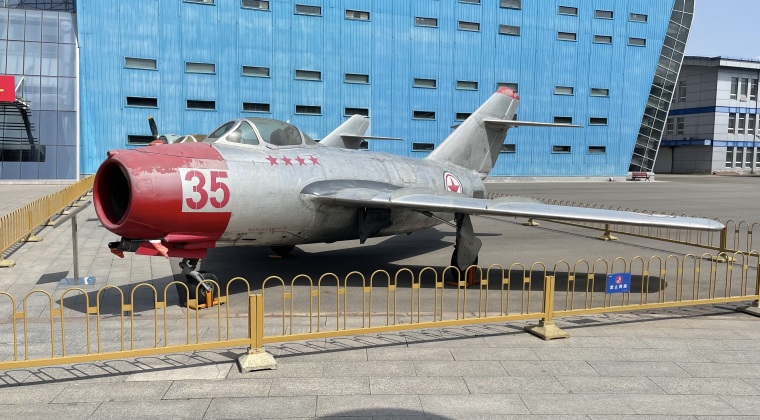
Also on display at the China Aviation Museum are multiple airframes which have seen actual combat – namely Soviet built MiG-15 fighters which were employed during the Korean War. Many of these are displayed in North Korean colours. The Korean War – referred to in China as the War to Resist America and Support Korea – saw China’s air force deployed for the most intense combat in its history with highly significant implications. Beginning less than ten months after the formation of the People’s Republic of China, the newly formed PLA Air Force was ill prepared to fight a major air campaign against a massive U.S.-led coalition, but performed well despite scarce training largely due to the major performance advantages enjoyed by the MiG-15 over Western fighter classes at the time. The MiGs left the large majority of Western fighters entirely obsolete, and their ability to take a heavy toll on American strategic bombers such as the B-29, which had just less than a decade prior devastated cities across Japan causing millions of casualties, had important strategic implications for China’s security. It came at a time when figures in the U.S. leadership, including the Supreme Commander of allied forces General Douglas MacArthur, strongly lobbied for an expansion of the war into a full scale assault on Chinese population centres as had recently been done against Japan, with the demonstrated vulnerability of American strategic bombers against even a small number of MiGs being an important factor deterring this.
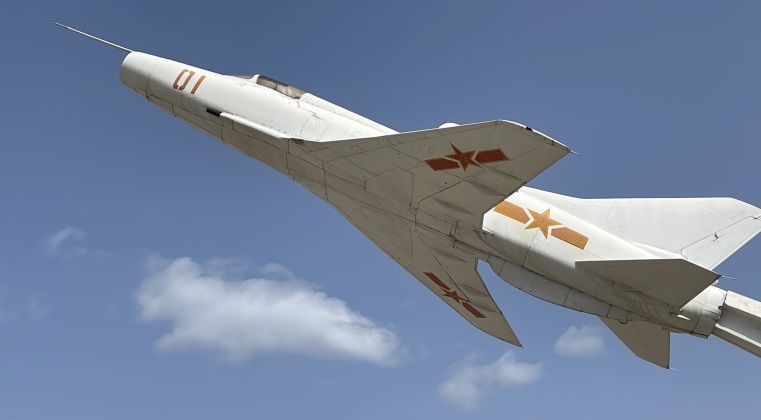
A number of rare aircraft were notably on display outdoors including a model J-12 lightweight fighter – a class which began development in the late 1960s but was never completed. The J-12 has several similarities to the J-6 but was significantly lighter and designed specifically for short takeoff and landing operations from makeshift airfields. This was seen as highly valuable under China’s military doctrine at the time which emphasised decentralisation of operations and wide dispersion of key assets and facilities, with the North Vietnamese and North Korean experiences under intensive Western bombardment being key influences. Although it proved capable of takeoffs and landings as required, and testing proceeded smoothly, the fighter’s very limited performance compared to modern aircraft, largely due to design compromises required to achieve its very short takeoff capabilities, led to the program’s cancellation in February 1978.
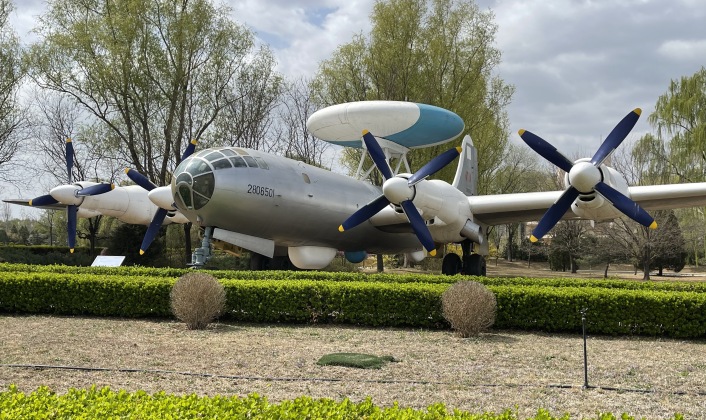
Another rare display is a one of a kind KJ-1 prototype airborne early warning and control (AEW&C) aircraft, which was developed in the 1960s when a single Tu-4 bomber was modified to mount a mount a Type 843 rotodome and modern avionics. The project proved unsuccessful, although the Tu-4 fleet in Chinese service had a highly interesting history. The aircraft were developed in the Soviet Union from the mid 1940s by reverse engineering American B-29 Superfortress bombers which had made emergency landings in the country, and provided the USSR with a long range strike capability sufficient to deliver nuclear warheads to U.S. territory on one way strikes. The design and the B-29 itself quickly became obsolete in the 1950s, however, as the USSR introduced the more advanced Tu-95 and Tu-16 bombers leading the country to donate a portion of its fleet to China. The donation provided the country with its first strategic bomber capability. By that time the PLA Air Force was highly familiar with the capabilities of the B-29, on which the Tu-4 was closely based, after multiple encounters with the American aircraft over Korea. An original Tu-4 is also on display at the Chinese Aviation Museum as well as domestically produced derivatives of the Soviet Tu-16 and Il-28 bombers from the early 1950s and late 1940s.
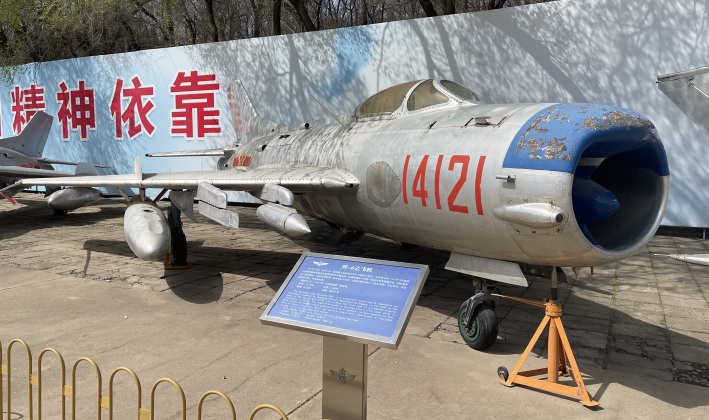
As China emerges as a leading power in military aviation competing alone on a peer level with the United States, the China Aviation Museum reveals a great deal regarding the history of the PLA Air Force and the country’s military aviation industry highlighting the struggles faced during the Cold War and how rapidly it has progressed since the beginning of the 1990s. With very few of the aircraft on display being of classes which are still in service today, the museum contrasts sharply to aviation museums in the West or in Soviet successor states where the late Cold War era equipment seen still forms the backbone of national fleets today – whether Su-27s displayed in Belarus, MiG-31s displayed in Russia or F-16s displayed in the America. China’s aviation industry moved from catching up with its first fourth generation fighter in 2004, 25-30 years behind the U.S. and USSR, to fielding a world leading fifth generation fighter just 13 years later, and today gaining leadership in a fast growing number of technologies in the field. A look at the vast numbers of J-6s at the China Aviation Museum, which even 30 years ago still formed the backbone of the fleet, symbolises the magnitude of the recent advances.












